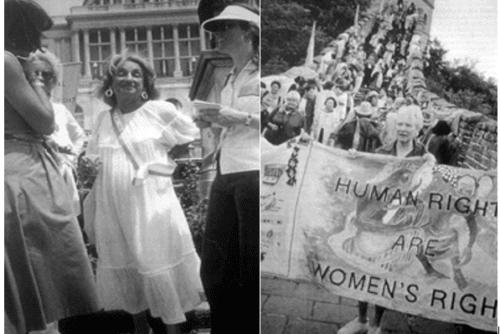Most domestic workers are immigrant women of color from the global South who bear enormous pressure to support families both in the U.S. and abroad. In a recent survey conducted by DataCenter and Domestic Workers United, researchers found that 98% of domestic workers are foreign born and that 59% are the primary income earners for their families. Domestic work remains one of the few professions available to immigrant women in major cities. For this reason, it tends to draw in migrants from poor countries in search of work in our cities’ growing informal service sectors. Many urban immigrant communities rely on the income of domestic workers for their economic survival.
The pressure to support their families economically is compounded by domestic workers’ responsibilities to provide care for their own families and homes. The more hours they work, the fewer hours they have to spend with their own children: making nutritious meals, helping them with homework, or reading them a bedtime story. If you are working as a domestic worker in the United States, your own family will often be left without the care they need and deserve.
Long hours are just the beginning. While some employers treat their employees with dignity and respect, others use their power to compel their employees to work as many hours as possible for as little as possible. The power imbalance between domestic workers and employers is severe. The employers are commonly of a privileged class, race, and immigration status with respect to the women they hire to care for their homes and families. Most workplaces have one lone worker. The workplace is their employers’ private homes—often seen as a “man’s castle”—a place where the government has no business or authority. Advocates often compare the industry to the “Wild West” because it seems to function above the law. Employers can utilize sexual and gender-based harassment to instill fear, as well as exploit workers’ immigration status to establish control in the workplace. Considering the prevalence of domestic violence, despite generations of organizing and advocacy on the part of the women’s movement, one can imagine what is possible behind closed doors.
“Maria” worked as a caregiver for a child with a disability. A Central American woman in her mid-sixties, she came to the United States to support her family, including her diabetic son whose insulin she could not afford. In addition to constant care for a child with a disability, she was responsible for doing the cooking, cleaning, and ironing for the entire household. Maria worked 18 hours per day, six days per week for under $3 per hour. She lived in the basement of her employer’s home where a broken sewage system flooded the floor by her bed. She had to collect cardboard and wood from the street during the day so she could use them as stepping stones to her bed at night. After three years working under these terrible conditions, Maria was fired without notice or severance pay. Working as a domestic worker in the United States often means working in unhealthy conditions, facing constant fear of firing, of deportation, of harassment and of abuse.
Domestic work is one our nation’s oldest professions, so one should be able to assume that labor laws and other measures would protect the basic rights of the workforce. Instead, domestic workers have been explicitly excluded from labor laws since the New Deal. The exclusion of domestic workers—most of whom were African American women in the South at the time those labor laws were passed—is rooted in the legacy of slavery. It reminds us that Jim Crow is alive and well in the labor laws. In many states, domestic workers are excluded from the definition of “employee.” Eight decades after the passage of this nation’s foundational labor protections, domestic workers are still struggling to assert basic worker rights like time off and overtime pay.



